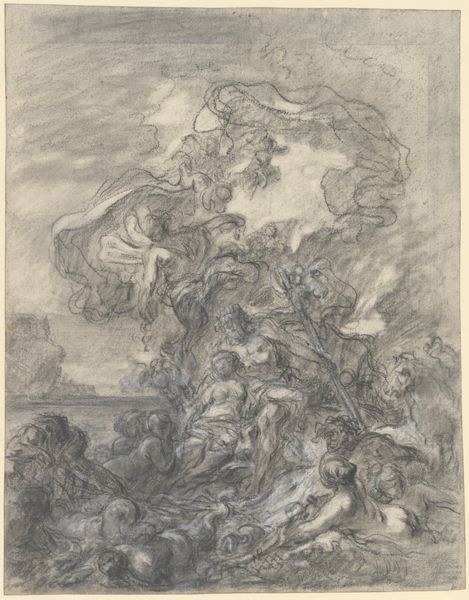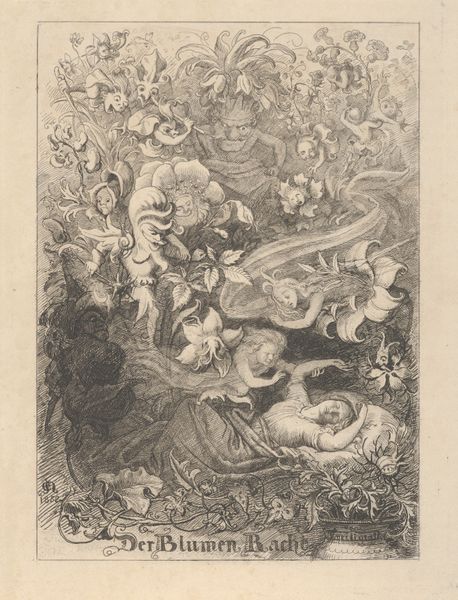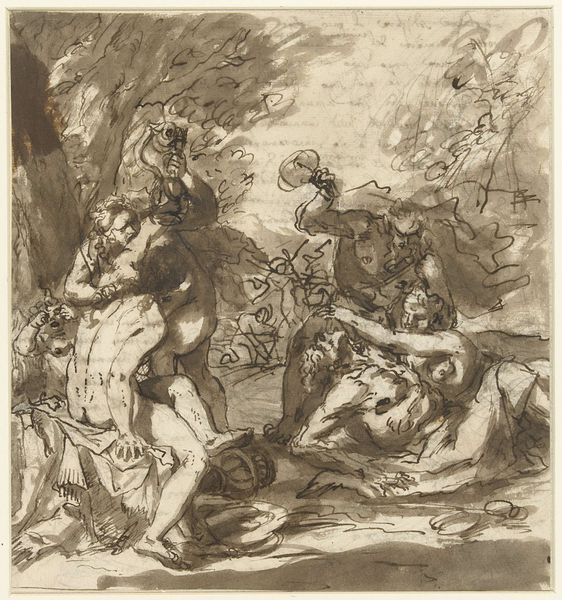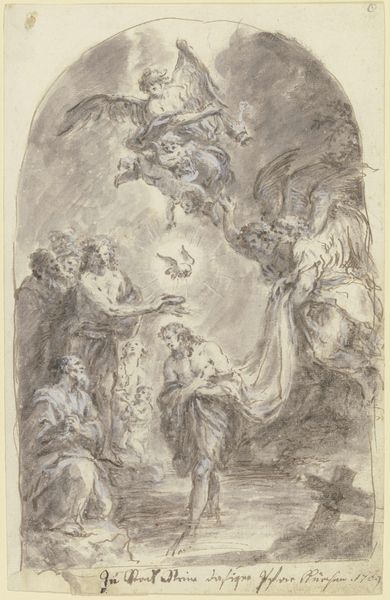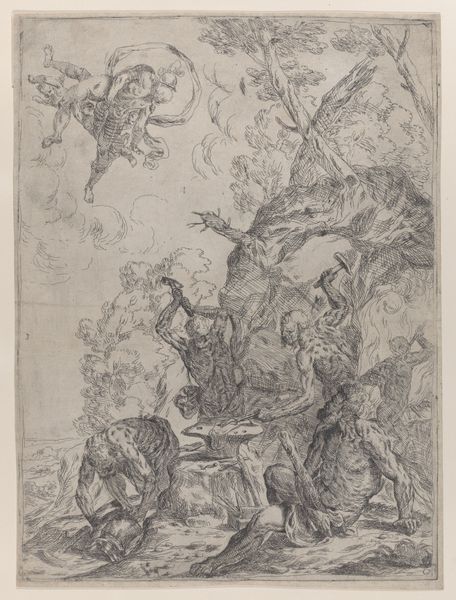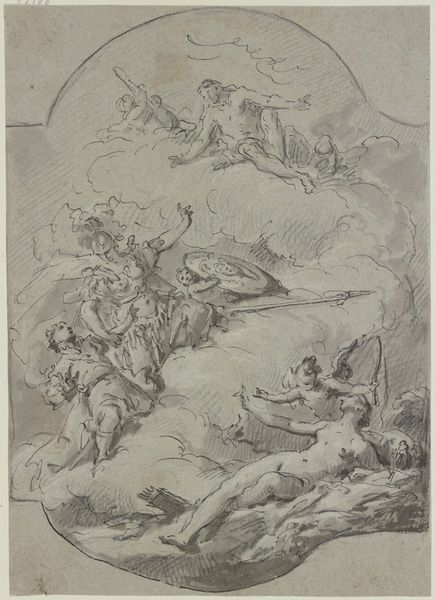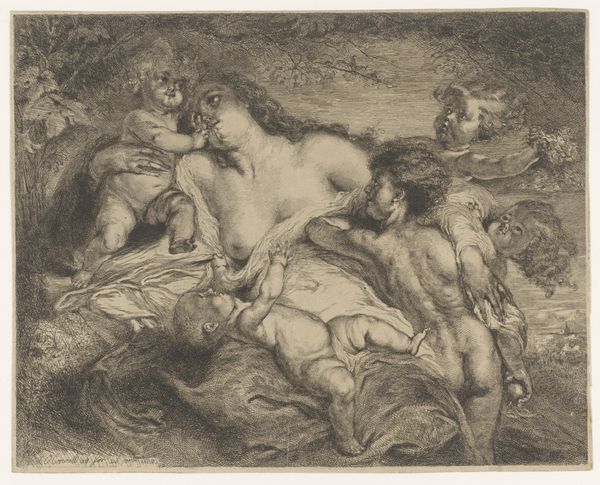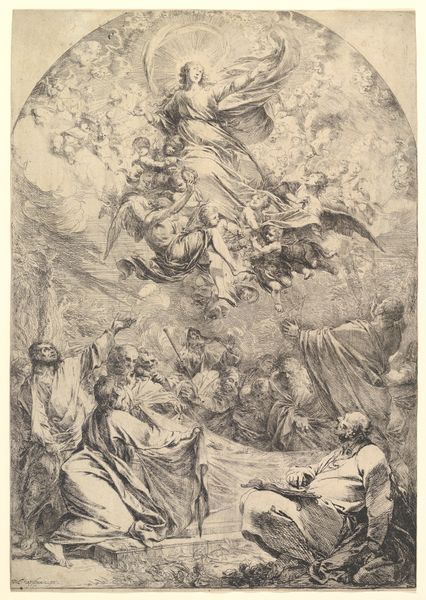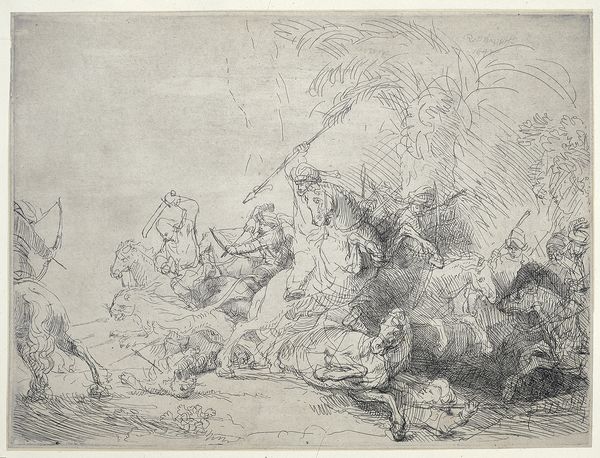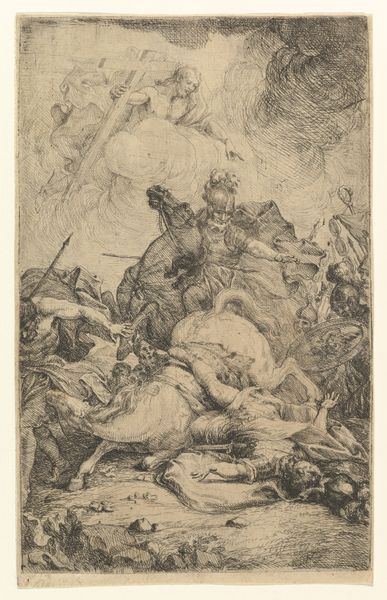
drawing, print, etching, paper, ink
#
drawing
#
narrative-art
#
baroque
# print
#
etching
#
figuration
#
paper
#
11_renaissance
#
ink
#
history-painting
#
angel
Dimensions: Plate: 15 9/16 × 11 3/8 in. (39.5 × 28.9 cm) Sheet: 15 13/16 × 11 1/4 in. (40.2 × 28.6 cm)
Copyright: Public Domain
Editor: This is Bartolomeo Biscaino’s “The Nativity with Angels,” made between 1650 and 1657. It’s an etching in ink on paper, currently at the Metropolitan Museum of Art. The scene feels quite intimate despite the heavenly host of angels above. What layers do you see in this piece? Curator: What I find particularly compelling is the intersection of the divine and the domestic. Biscaino situates the birth of Christ, a monumental event in Christian theology, within the humble confines of a stable. The Virgin Mary isn't depicted as a queen but as a mother, exhausted perhaps, cradling her newborn. Editor: That’s a strong reading. Curator: Consider the period. Seventeenth-century Europe was ravaged by wars fueled by religious divisions, and was a strictly patriarchal society. How might Biscaino's emphasis on the tenderness between mother and child offer a counter-narrative, perhaps even a critique, of the prevailing social and political climate? And why do you think the stable feels so dark? Editor: It almost suggests secrecy, maybe even danger. The common narrative portrays it as a celebratory, glorious arrival. But it wasn't that way for Mary and Joseph, whose vulnerability feels emphasized here. And of course in a broader context, the Holy Family would ultimately experience religious persecution. Curator: Precisely. Biscaino's work then invites us to reflect on the complex reality of historical narratives, acknowledging not just the triumph, but also the struggles and sacrifices inherent in moments of profound change. It's a reminder that even within the sacred, human experiences of pain and resilience persist. Editor: That's definitely broadened my perspective, making me see the piece as less of a simple celebration and more of a layered commentary on faith and the human condition. Thanks! Curator: My pleasure!
Comments
No comments
Be the first to comment and join the conversation on the ultimate creative platform.

